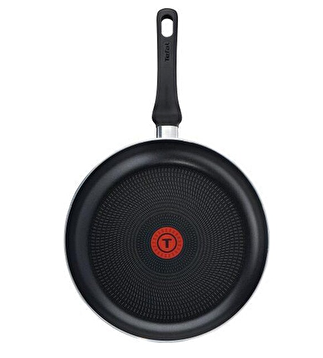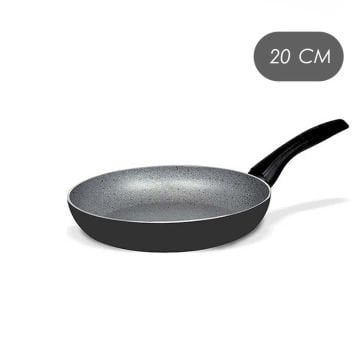The History and Evolution of Teflon Cookware
The History and Evolution of Teflon Cookware
1930s: The Serendipitous Discovery
Teflon's journey commenced in 1938 when Roy Plunkett, a chemist, stumbled upon a remarkably slippery substance while working at DuPont laboratories. This serendipitous discovery marked the birth of Polytetrafluoroethylene (PTFE), commercially known as Teflon.
1940s: War-Driven Industrial Applications

World War II propelled Teflon into various industrial applications, particularly in military contexts where its non-stick properties were harnessed for aircraft components and military equipment. This period laid the groundwork for Teflon's versatility beyond the kitchen.
1950s: Transition to Household Use
 The 1950s witnessed a shift as DuPont introduced Teflon-coated consumer products. Non-stick pans, in particular, gained immense popularity, revolutionizing home cooking practices and solidifying Teflon's status as a household name.
The 1950s witnessed a shift as DuPont introduced Teflon-coated consumer products. Non-stick pans, in particular, gained immense popularity, revolutionizing home cooking practices and solidifying Teflon's status as a household name.
1960s: Non-Stick Revolution Takes Root

The 1960s marked the widespread adoption of Teflon-coated cookware in households globally. The non-stick revolution transformed culinary experiences, making cooking and cleaning more efficient and enjoyable.
1970s-1980s: Diversification and Technological Advancements

As technology advanced, Teflon's application diversified. The 1970s and 1980s saw Teflon's integration into an array of kitchen appliances beyond traditional pans, including microwaves and toaster ovens, showcasing its adaptability and versatility.
1990s: Market Dominance and Consumer Appeal
Teflon's dominance in the cookware market continued through the 1990s. Its enduring popularity was fueled by consumer appeal, with households increasingly relying on the convenience offered by non-stick surfaces.
2000s: Environmental and Health Scrutiny

Entering the 21st century, Teflon faced scrutiny due to environmental and health concerns associated with its manufacturing process. Research initiatives explored alternative materials, prompting a shift in consumer preferences towards eco-friendly options.
2010s: Innovation Amid Challenges
The 2010s saw continued innovation in non-stick coatings. Manufacturers addressed environmental concerns by developing PTFE-free alternatives, maintaining Teflon's functionality while mitigating its ecological impact.
2020s: Sustainable Futures and Beyond

In the current decade, the focus remains on sustainable practices. Teflon, while facing challenges, adapts through ongoing research into environmentally conscious production methods, ensuring its relevance in contemporary kitchens.
Conclusion: Teflon's Enduring Legacy

The evolution of Teflon cookware mirrors societal shifts, from wartime industrial applications to its ubiquitous presence in modern kitchens. As Teflon navigates environmental and health considerations, its legacy endures, shaping the culinary landscape and emphasizing the need for sustainable innovations in cookware manufacturing.
References
- "poly(tetrafluoroethylene) (CHEBI:53251)". ebi.ac.uk. Retrieved 12 July 2012.
- ^ "PTFE". Microwaves101. Archived from the original on 16 July 2014. Retrieved 16 February 2012. Jump up to:
- a b "The History of Teflon Fluoropolymers". Teflon.com. Retrieved 3 February 2021.
- ^ "Roy J. Plunkett". Science History Institute. June 2016. Retrieved 10 February 2020.
- ^ US 2230654, Plunkett, Roy J, "Tetrafluoroethylene polymers", issued 4 February 1941
- ^ "History Timeline 1930: The Fluorocarbon Boom". DuPont. Retrieved 10 June 2009.
- ^ "Roy Plunkett: 1938". Archived from the original on 17 February 2012. Retrieved 10 June 2009.













































